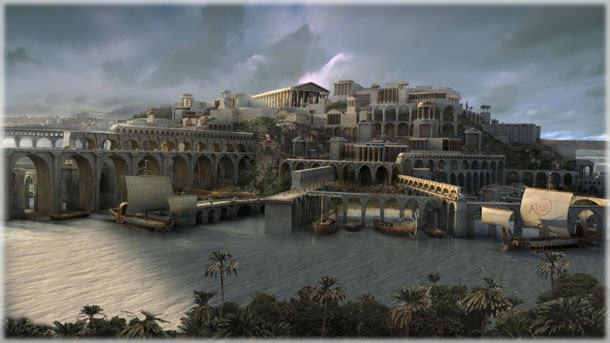
Dear Friend and Reader:
In the midst of all of this nuclear madness, Nat Geo channel premiered a special about some scientists who have discovered the remnants of what they believe is the lost city of Atlantis. Its location, according to the theory? Some mud flats in southern Spain, near Portugal, called Donaña. The program, called "Finding Atlantis," was created for the Nat Geo channel by a Canadian production company, and with a little research is revealed to be controversial.
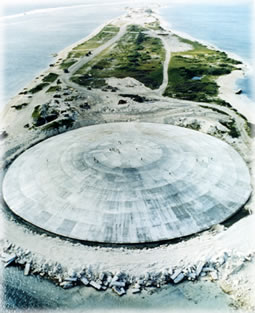
The original archeological project, started by a Spanish team and then joined by Richard Freund of the University of Hartford, searched the Donaña bogs using a kind of MRI device, looking for underground evidence of a civilization of which they seem to have found some additional clues (this is a previously researched site). Freund proposes that the location of the presumed Atlantis focused on by the special was destroyed by a tidal wave. "This is the power of tsunamis," he told Reuters. "It is just so hard to understand that it can wipe out 60 miles inland, and that’s pretty much what we’re talking about."
"Debate about whether Atlantis truly existed has lasted for thousands of years," Reuters reported as background to the program. "Plato’s ‘dialogues’ from around 360 B.C. are the only known historical sources of information about the iconic city. Plato said the island he called Atlantis ‘in a single day and night…disappeared into the depths of the sea’." Yet though many have gone searching for Atlantis, others believe that Plato was speaking in a kind of intellectual metaphor.
Of the things about the archeological find that Freund claims exist, the most endearing are models of the fabled city that were supposedly created as memorials by its refugees who landed in Spain — something denied by the Spanish scientists who say that no such models were found. For our purposes, though, it doesn’t matter whether the TV special is true or not — what matters is that the symbol of Atlantis makes a spontaneous appearance in our culture just as the world is on the brink of nuclear disaster.
Though we know very little about the actual Atlantis — including what it was called, when it existed, or whether it existed — the archetype of the lost continent is a persistent aspect of human consciousness. Sometimes it’s called Lemuria, or Mu. From one past-life regression about 10 years ago, I have a direct memory of being captain of a merchant marine vessel when Antarctica was inhabited, at the time of the mass evacuation from that continent. According to what I learned in my regression, one of the destinations for refugees was Spain. My wife went there. I stayed behind. It turned out that the leaders of the society who ordered the evacuation were about a century or two early in their predictions.
The myth of the lost civilization is persistent and it is intriguing. So, too, is the notion that a civilization, such as our own, might fall by its own undoing. I don’t think there is anyone who hasn’t considered whether this is inevitable; not out of any particular meanness or religious belief, but rather because we’re such a bunch of dumbasses who refuse to wake up.
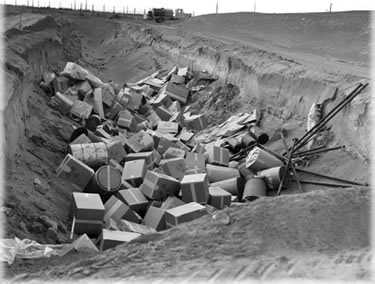
In modern mythology, Atlantis represents a society that was stricken from Earth because it was unable to handle the technology that it created. In some versions of the tale, that is specifically what we (in our era of gadgets) would think of as spiritual technology (telepathy, mental manipulation of matter and time), yet where the ethical capacity to handle these talents has failed to evolve along with the power we hold.
It is the same basic idea; and it’s the same issue we’re facing now. It’s what Kurt Vonnegut was talking about in Cat’s Cradle, which we read about two weeks ago when I covered Borasisi. In a particularly literal moment of astrology, the idea for the chemical that ends the world came out of General Electric, when Vonnegut was a PR man there. Notably, GE designed and manufactured the nuclear reactors that are now threatening to spin totally out of control. This gives us a hint, by the way, that Borasisi has a resonance with the long history of crimes committed by GE.
Atlantis shows up as a factor in astrology as well. Minor planet specialist Martha Lang-Wescott delineates the asteroid (1198) Atlantis with the following themes: "Sense of impending doom; belief in deserved punishment/negative karma; invasions of privacy; access to inside or confidential information; abuse of resources, talents or information; importance of confidentiality/use of knowledge; water disasters; warnings."
In a phone interview Thursday, Wescott added another theme: "The other part of Atlantis is a negative projection, and we’re seeing a lot of that. Atlantis is ‘doomsday is here’." For example, she says that, "People with Venus/Atlantis aspects doom their relationships. If Atlantis is prominent [in a public chart], then you’re going to hear astrologers talking about doom and gloom."
Here in our era dominated by the negative obsessions of fundamentalist Christians, there’s plenty of that; it’s a religion based on the Revelation or the Rapture or the Apocalypse, which is the supposed ‘end of the world’ — predicted relentlessly for the past two thousand years (blended artfully with a radically sex-negative message), and presumed in modern times to be nuclear. I often wonder whether all these negative projections about cataclysm are adding up to the thing itself. Human thought is powerfully creative, and the federal budget has a lot of potential.

It is little known that J.R.R. Tolkien, in a work called The Silmarillion, gives his own version of the fall of Atlantis, an island he calls Numenor, located off of the western shores of Middle Earth. Numenor existed about 35 generations prior to the commencement of action in The Lord of the Rings. Anyone who has read this book has met and loved one of the descendants of its refugees — Strider (Aragorn, son of Arathorn), who becomes King Elessar I. Most of the wondrous places that readers visit along the way as Frodo and Samwise seek to destroy the ring were created by former Numenorian refugees and their descendants. The fictional empires of Arnor and Gondor were founded by a handful of people who escaped to Middle Earth right before a quake and tsunami destroyed Numenor. That is why they were described as the ‘race of kings’. They founded empires. Incidentally there is a direct bloodline back to Elros, the founder of Numenor preserved by Strider in the group of which Strider is a part, which is known as the Rangers of the North. In other words Strider would be heir to the Numenorian throne, had that civilization existed in his day.
The most beloved fantasy novel of the 20th century has its early origins in a version of Atlantis. Numenor falls because its people, who live long and abundant lives in a kind of paradise, are terrified of death. They first become obsessed by wealth, then they crave the power and immortality of the gods who live on islands further west. Their downfall is propagated by Sauron, in an earlier incarnation than we know him in The Lord of the Rings. Their hubris is spiritual rather than technological: based on their fear of the unknown, they want to live forever.
More recently, in Conversations with God by Neale Donald Walsch, there is a part that I think of as the Atlantis passage. "As I have said, this isn’t the first time your civilization has been at this brink," God says to Walsch at one point in their dialogue.
"I want to repeat this, because it is vital that you hear this. Once before on your planet, the technology you developed was far greater than your ability to use it responsibly. You are approaching the same point in human history again. It is vitally important that you understand this. Your present technology is threatening to outstrip your ability to use it wisely. Your society is on the verge of becoming a product of your technology rather than your technology being a product of your society. When a society becomes a product of its own technology, it destroys itself."
Whatever you may be hearing about the nuclear crisis in Japan, this week human civilization is now revealing how close it is to doing just that.
Fukushima Daiichi: Thousands of Tons of Radioactive Waste
As of this writing on Thursday evening, here is the situation at the Fukushima Daiichi plant. All six of its reactor cores are in some level of distress after being damaged by an earthquake and tsunami one week ago. We’ve been covering this extensively on the Planet Waves blog — here are some of those articles, and my most recent audio. In short, the tsunami damaged the reactors’ cooling systems, which has allowed the fuel to heat up and in three cases, partially melt.
As a result, there have been hydrogen explosions in reactors 1, 2 and 3. From what I am reading, it’s fairly certain that the explosions in 2 and 3 breached the steel inner containment structures. Fuel cores have been exposed in all three due to cooling system failures, and there is a struggle to keep any water level at all in units 2 and 3. This means the fuel cores have melted partially and may melt entirely if they get too hot and the self-sustaining reaction goes out of control. When you hear news reporters use the word ‘catastrophic’ to describe something worse than is now happening, that’s what they are hinting at.
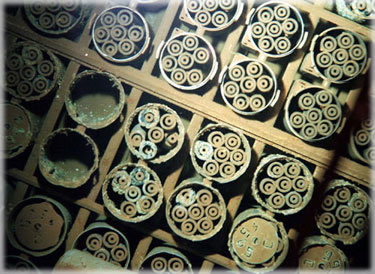
While a full meltdown creates a worst-case scenario for reasons I will explain in a moment, Unit 3 has a special issue: about 6% of the fuel is called MOX, or mixed oxide, which contains plutonium.
Plutonium is another universe of toxicity than uranium. Inhaling as little as one-millionth of a gram can cause lung cancer, according to Dr. Helen Caldicott, co-founder of Physicians for Social Responsibility. I would dare to say it’s more toxic than the worst dioxin, TCDD. Every single gram of the stuff is supposed to be highly regulated. So there is a special focus right now on Unit 3, though the presence of plutonium is rarely being mentioned; it is getting a bit of attention and I’m glad of that. Here is an NPR article that covers the issue, even as the Tea Baggers try to pull federal funding for that station. And it is mentioned in this New York Times article.
Impressively, the Times reported Thursday night, "The decision to focus on the No. 3 reactor appeared to suggest that Japanese officials believe it is a greater threat, since it is the only one at the site loaded with a mixed fuel known as MOX, for mixed oxide, which includes reclaimed plutonium."
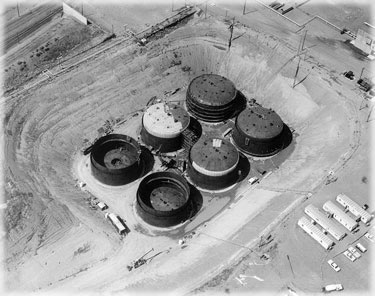
Unit 4, meanwhile, has another issue. The spent fuel pond (a storage area for massive amounts of old fuel rods) has run dry (or was pumped dry in an emergency need for water) and the old rods are getting very hot from fission reactions that are stirring to life — hot enough to potentially melt down. Unit 4 has burst into flames several times, apparently not from hydrogen explosions but rather from the fuel rods themselves starting to burn (most likely, the explosive zirconium cladding). The problem with spent fuel is that it contains high concentrations of the degradation products of fission, a whole stew of isotopes that move through the food chain and can jeopardize many organ systems.
Units 3 and 4 are currently being doused with seawater by helicopters, a technology better suited for fighting a forest fire. This is an utterly desperate measure. Units 1 and 2 are, we’re told, being refilled ongoing with fire hoses and water cannons. As of late Thursday, engineers were still trying to restore power to the plant, which could provide some hope of the remaining cooling systems coming back online. And, by the way, there are problems with the spent fuel storage facilities heating up in Units 5 and 6, though the reactor cores in those units are presumably in fairly good shape compared to the others. But I have not heard the words ‘cold shutdown’ applied to them.
Assuming the situation stays stable for a while and is eventually brought under some vague semblance of control, that still implies the release of a plume of radioactive steam, an underground plume and a flood of radiation into the Pacific Ocean. This will contaminate much of Japan, and because the Jet Stream carries air east at a fairly rapid speed, I’ve read the plume will reach North America (particularly the West Coast) as early as this weekend. The levels may seem low at the moment. But relatively low levels of radioactivity can cause the same issues as higher doses based on what is known as the Petkau effect.
In addition, there is the issue of bioconcentration. Radioactive materials move through the food chain quickly, concentrating not only in predators but (for example) also in grass-eating cows. There is no such thing as a little radiation, and every drop of the water being dumped onto these reactor cores is turning radioactive and being released to the biosphere.

That was the good news. Borrowing from Rachel Maddow, I know this is a difficult time to say worse, but it actually can get worse and has been hovering close to it from day to day.
Remember that we are in new territory where nuclear accidents are concerned. This specific thing has never happened before.
However, it is probable that if even one of these reactor cores or spent fuel ponds goes into full meltdown, it can sink below the land, reach the water table and create an underground explosion that destroys the small swath of land where this drama is unfolding, causing all of the reactor cores and spent fuel to go out of control. In any event there would be too much radiation for anyone to stay on the site keeping a grip on the others.
That would make Chernobyl into something that seems like a Science Fair experiment by comparison — and it wasn’t. There were about 180 tons of radioactive fuel involved in Chernobyl. At Fukushima, there are at minimum 1,000 tons and so far as I can tell, as much as 3,000 tons (including spent fuel) based on comments made by our government Wednesday, all concentrated in this one facility. (Rachel Maddow covered this in some detail last night).
The Full Moon, and the Aries Sun Conjunct Uranus
The astrology for the next five days is not particularly encouraging, though if the workers now sacrificing their lives at the plant can keep a grip on this through around March 24, I would say the situation might de-escalate. Here’s my reasoning.
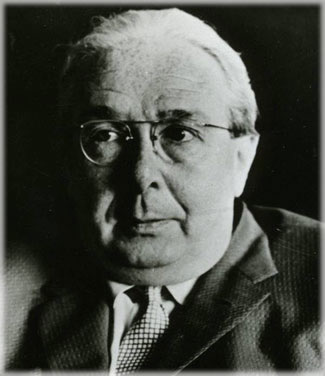
We are currently building into the Full Moon in Virgo. This is a close Full Moon, happening at perigee. It’s running with a lot of momentum, and it’s happening at the very end of the astrological year, with the Sun at equinox — about to enter Aries. Hence Saturday’s Full Moon is an Aries Point event, which (as we have seen) tends to magnify things greatly and brings a lot of people into whatever situation is involved. It’s the world crashing into your living room. It’s you taking part in collective destiny in some direct way, just like we saw the people of Wisconsin do.
The Full Moon represents a peak, and the Sun-Uranus conjunction exactly on the equinox represents a kind of collective surprise development. Let’s hope that’s about some friendly space aliens showing up with their radiation extinguishing devices and cooling off the whole situation; that’s approximately what we need right now, because so far, things could use improvement.
A number of other features make this a pretty special Full Moon. For example, it’s directly involved with the lunar nodes (which I covered two issues ago, and in the second article down). It’s exactly square the nodes, which gives the event the feeling of an eclipse, or a point of no return.
The lunar nodes are aligned with two particularly meaningful points. The node in Sagittarius is pointing to the Galactic Core; hence, this Full Moon is square the core of our galaxy. This stirs up a spiritual crisis. To me the core represents our connection to Source, or our homing signal. The star that Planet Earth hangs out with is located 25,000 light years from the core — far out near the edge of the galaxy. And our star is located between two of the spiral arms. So we are in a distant, remote location, in the boondocks of the galaxy — and for this reason I am not surprised our particular planet so often has a ‘god forsaken’ feeling. The square between the Sun, the Moon and the Galactic Core suggests strongly that we have to seek inwardly for our spiritual connection. It also represents events that might provoke us to do that, and I would say if you have not noticed that fact yet, this is an awesome time to pay attention.
Remember that on our plane of reality, emotional impulses are binary: love and fear. Many have a hard time telling the difference. Here is a clue. If it does not feel like love, then it’s probably fear.

The South Node, opposite the Galactic Core, is conjunct a point that keeps showing up again and again in charts. The point is at 28+ Gemini. This is a very strange spot in the zodiac that shows up prominently in the charts for Sept. 11, the Asian tsunami of 2004, WikiLeaks, two key charts for Japan — and then for the quake one week ago. These are events that involve the breakdown of systems, turning points in history and in one case someone who is working to tell the truth about those systems.
I happen to have the asteroid Beagle there, and I’ve been hunting this point like a hound for several years. Up till now I was aware that the connection could not be a ‘coincidence’ (I covered this in my first article on WikiLeaks, by the way). Now, this is not merely a point that appears in the charts for catastrophes; it comes with an odd kind of disaster that seems eerily out of place — and it’s also present in people or things that raise our awareness. For example, WikiLeaks just published memos that prove Japan knew it could have this problem years ago.
When I saw how involved it was in both the charts for Japan and the quake, that made me more curious. There is a fixed star at this point, called Betelgeuse. I knew this star was there but I never researched it. A friend looked into it this week, and she dug something out of a 17th century astrology textbook — no ordinary one, the first one ever published in English, called Christian Astrology by William Lilly. He associates the star with "rare engines of war." That is a quote. Now, that is interesting, since at the time he wrote that there was no such thing as a jetliner or a skyscraper.
Checking Wikipedia next, we learned more. Betelgeuse is a red star, connected with Mars. "With the history of astronomy intimately associated with mythology and astrology prior to the scientific revolution, the red star, like the planet Mars that derives its name from a Roman war god, has been closely associated with the martial archetype of conquest for millennia, and by extension the motif of death and rebirth." Notably this star is opposite the Galactic Core, facing toward intergalactic space. It feels that way.

Here is what I am thinking. As these global events come closer together, it’s starting to feel like someone is doing all of this. I got that feeling the strongest over the weekend pondering how this extremely rare quake — the 3rd most powerful on record — struck a region in Japan just where there are numerous nuclear reactors (including others not currently in distress). When I read the phrase rare engines of war, I suddenly felt like I was sitting in the middle of someone else’s war.
The question is: whose war, and over what? I don’t know, but I can tell you that the atom was not split for peaceful purposes. It was split with the intention of killing a lot of people. That much is history. Most wars are fought over the usual stupid reasons — power, greed and egotism. Heck, why not? The world is ending anyway.
Next, it occurred to me that this was a war in which environmental disasters were being used as weapons. When Friday’s quake happened, there were a spate of posts that went around about how the federal HAARP facility on the Alaskan tundra was turned up to full tilt at the time. I wasn’t in the control room taking pictures — I don’t know. But many people believe this is an electromagnetic device capable of changing weather patterns and inducing seemingly natural disasters. But this is not my field of inquiry; it was a little too tinfoil hat for me, that is, until I was looking at video of nuclear reactors blowing up one after the next.
So, I started asking around. I asked a friend who is an engineer if you can make an earthquake. He sent back a number of references, the most interesting of which was a quote from Bill Clinton’s secretary of defense, a guy named William S. Cohen, during a news briefing. The quote comes from the Department of Defense transcript of that briefing.
He said he had read about the prospect of "some scientists in their laboratories trying to devise certain types of pathogens that would be ethnic-specific so that they could just eliminate certain ethnic groups and races; and others are designing some sort of engineering, some sort of insects that can destroy specific crops. Others are engaging even in an eco- type of terrorism whereby they can alter the climate, set off earthquakes, volcanoes remotely through the use of electromagnetic waves" [emphasis mine].
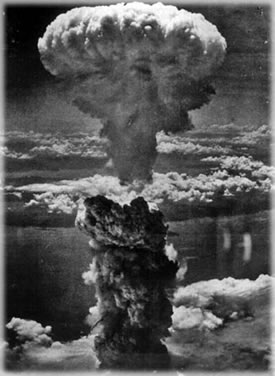
Gee whiz: the very secretary of defense speaking, not some conspiracy (or astrology) website? And, um, like — others are doing this? Like who for instance?
Saddam Hussein? Castro? Russia? Darth Vader? Well, whoever.
When the United States is talkin’, it’s always someone else. We’re nobody special, just the only country ever to use the Bomb on a population. And we happen to have one of these electromagnetic wave thingies — a really big one and it keeps getting bigger. That would be HAARP.
And this is not particularly new technology. Stuff like this was being developed by Nikola Tesla, an electrical engineer who was busy in the early 20th century. Tesla, who invented alternating current and thus the modern electrical grid, was ahead of his time. In 1897 he was researching cosmic rays.
I just looked at his chart. He has Mercury in that mysterious 28+ degree of Gemini: Mercury, the planet of the mind, of ideas and of messages. By the way — for what it’s worth — he was the biggest rival of Thomas Edison, the founder of GE — the company that designed those nuclear reactors that are melting down.
Thank you, that was all very interesting
— but at the moment we’re sitting here wondering what to do. Wondering what’s going to happen to all that radiation. Wondering if they’re going to get a grip. And the show is not over — far from it.
In addition to the 2012 configuration (Uranus square Pluto) I’ve been describing for weeks, there are many other aspects gathering around the Aries Point that I haven’t mentioned yet which hint at the possibility of a confrontation. These are about self-awareness awakening us to the forces of darkness that have, so far, kept themselves rather well cloaked. I mean, one definition of the perfect war is one that nobody knows is going on. It looks like something else.
In terms of how to process all this disaster by design, my own preference is to be aware rather than to pretend something is not happening. My preference is to stay connected and creative and curious rather than to pull away. I choose to embrace this moment with a sense of adventure rather than dread. This is a moment of collective awakening.
It may be the beginning of the very moment of collective awakening, here at the edge of the world.
I just have one question for you — what are you doing?
lovingly,

Additional Research: Tracy Delaney, Amanda Painter and Carol van Strum. Photo Research: Sarah Bissonette-Adler. Many readers have contributed ideas, facts and proofreading — thank you.



